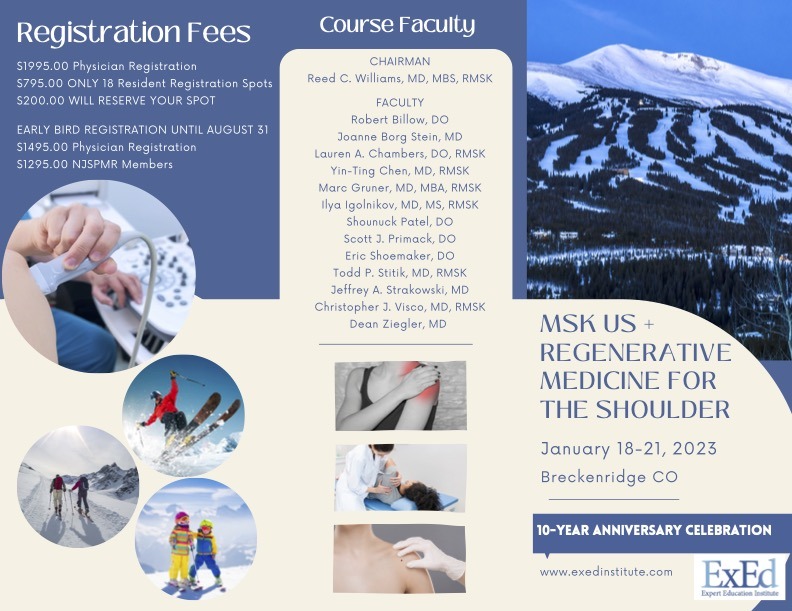Program Overview:
Shoulder pain is among the most common complaints in medicine, affecting upwards of 70% of people in their lifetimes and around 15% of all adults at any single point in time. The associated pain and dysfunction can be disabling to the point of having an incredibly negative impact on a person’s life and work. With such high prevalence and consequence, it is essential in musculoskeletal practice to understand the shoulder and its associated pathologies; including those affecting the joints, rotator cuff, labrum and surrounding muscles and nerves. Non-surgical treatment for these issues involves a multifaceted approach, individually curated based on diagnosis, and will often take patients through various treatment options including education, biomechanical and ergonomic offerings, phased physical therapy progressions, steroid injections and orthobiologic and regenerative measures.
With an emphasis on anatomy, function, pathology, procedural application and emerging medical modalities, this course is expertly designed to educate the attendee on the utility and application of diagnostic and therapeutic ultrasound as it relates to the treatment of the shoulder complex


- Increase the participant’s knowledge to better perform and interpret musculoskeletal ultrasound exams
- Interpret complex musculoskeletal ultrasound images and list treatment option and patient management strategies
- Outline the biology and evidence for use of various regenerative substances
- Describe when, why and how to integrate regenerative medicine as a practical treatment option
- Prepare regenerative substances for perform ultrasound guided injections
- Demonstrate the principals of injection techniques for the performance of shoulder pathologies with musculoskeletal interventions on cadaver models
- List the role of ultrasound in the evaluation of the shoulder
- State the role of ultrasound in nerve entrapment syndromes
- Increase confidence to incorporate protocols, advanced scan techniques and regenerative medicine applications to improve diagnostic and treatment modalities
